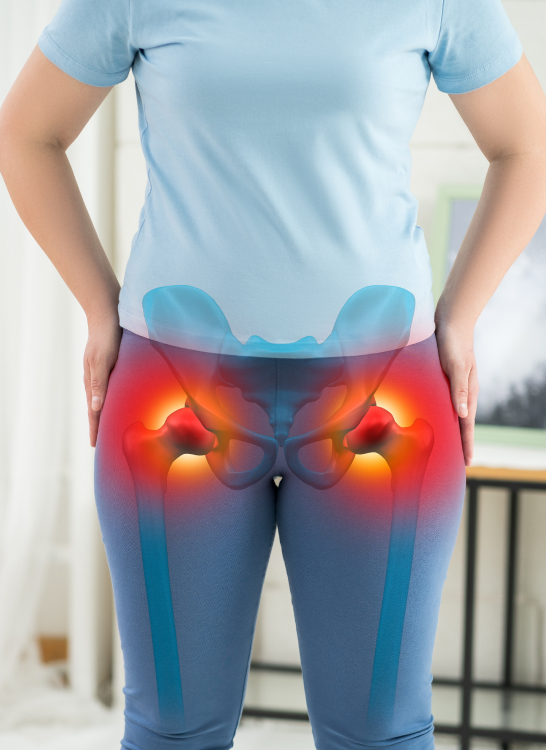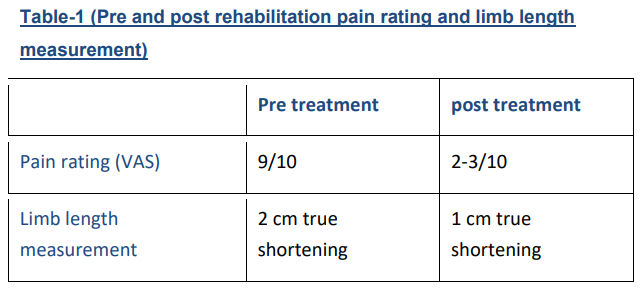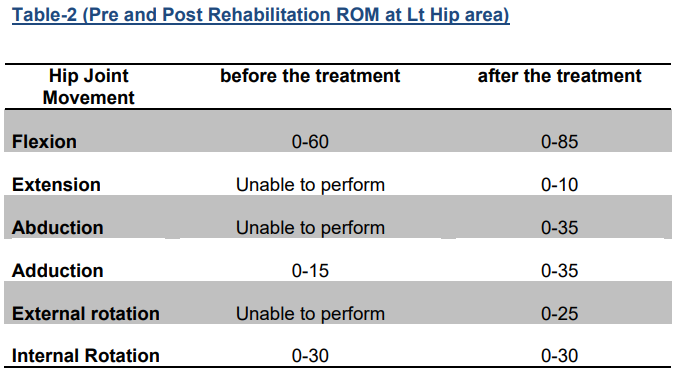
Avascular necrosis (AVN) also called as Osteonecrosis is a condition that occurs when there is loss of blood supply to the bone and bone tissues [1]. As bone is a living tissue that requires continuous supply of blood, an interruption to it may lead to death of bone. If left untreated for a longer time, the bone becomes brittle, distorts and eventually breaks. In 90% cases, Avascular necrosis is in the hip joint but can sometimes be seen in humerus and knees too [2]. Modern medicine treats only pain and in severe cases Total Hip Replacement surgery is done. After surgery also it takes a long time for recovery with limitation in movements and short life span of hip joint.
Alternative therapies like Siddha vaidyam; which is an ancient and old therapy has proved to be beneficial in managing the symptoms of chronic diseases like AVN. It treats by aligning body energies (mind, body and spirit), to empower and activate the body's internal healing mechanisms thus, resulting in cure and an improved lifestyle. It does not involve any kind of medications and chances are that there is no requirement to go for any kind of surgery.
The Siddha system is bestowed with various special therapies like Pressure Manipulaiton Therapy (Varmam), Physical Manipulation Therapy (Thokkanam), Pranayamam and Yoga that work well on long term relief in pain, improvement in movements of joints and aims at the preservation of structure, by stopping the progression of disease without any complications. Though, any kind of pressure on hip joints is contraindicated in AVN but these pressure release technique empowers the body's internal healing centres to effectively cure the condition and ensure long term healing of the disease condition internally. The chief healer assesses areas of energy blockages in the body, aiding removal of energy blocks, to enable uninterrupted energy flow.
AVN can be commonly seen in individuals aged between 25-50 years and 7-12% undergo total hip replacement due to its severity. In India, the mean age of onset of necrosis is 34.5 years [3].
AVN possibly is caused by trauma or non-traumatic injury, excessive alcohol intake and steroid abuse [4]. Almost 35-40% of all non-traumatic AVN cases are because of long term steroids dependency. AVN is highly prevalent among males, this could be attributed to higher levels of smoking and alcohol use among them. Sometimes, cancer treatments where radiation therapy is used, can also weaken the bone leading to necrosis of bone. Studies show overweight and obesity i.e more BMI, may also cause Osteonecrosis in some cases [5].
In initial stages, AVN causes no symptoms; but as the disease becomes chronic, the joint pain increases and restrict movements of hip. At first, pain is felt while putting pressure on the affected bone. Later there is continuous pain causing discomfort. If the disease is left untreated, there is irreparable joint degeneration, resulting in severe pain that interferes with individuals ability to move the joint. It also leads to decrease in the height of the affected leg and causes the lower limb to shorten [7].
A 43-years old female from Hyderabad having non-traumatic Stage-3 Avascular Necrosis, presented in February 2022 with complaints of severe pain in the left hip joint and lower back since 10 years [6,7]. She was diagnosed to have non traumatic stage 3 AVN. The pain was insidious in onset and gradually progressive in nature with an intensity of 8-9/10 on VAS pain rating scale. She had difficulty in doing any activity like walking, standing or sitting, bending and had continuous dull pain in Left hip radiating till left knee. Her left leg was 2-cm shorter than right leg which was visible while doing adduction of knees. She was unable to squat and do criss-crossing of her legs and could not climb stairs. The pain reduces partially on taking rest and medications.
The patient , a teacher by profession, a single mother had to forcefully take a break from her work because of the pain. As the responsibility of the household was on her shoulders she had immense psychological stress because of her ailment which led to depression and deterioration in her quality of life[8].
The patient is Non-diabetic and age-related Hypertensive. She has a H/o Bariatric Surgery 8 years back and and hernia repair with mesh replacement 5 years back. After 6 months of Hernia surgery, she had infection and was operated upon again. She observed after her surgery, her pain in Left hip aggravated with restricted movements. She consulted an Orthopaedic surgeon 4 years back who advised her to take out an X-Ray & MRI of hip joint along with other lab tests. According to Ficat and Arlet's grading system, an X-ray showed stage-3 AVN of the left femoral head.
The Orthopaedic doctor advised a hip replacement surgery but patient was reluctant for the same and was started with a course of steroids and physiotherapy sessions to strengthen the core muscles. The patient showed minor pain reduction and some improvement in the daily activities. However, the pain progressed over 4 years to the extent to which the patient had difficulty in day-to-day activities like standing for 10 mins, sitting, unable to sit cross-legged, and bending. During the last 2 years due to covid restrictions, she had to do all work by herself, which led to the pain getting aggravated to a scale of 9-10/10.
The aim of presenting this case is to see how Siddha therapy worked on curing the Avascular Necrosis condition by reducing pain and improvement and better flexibility in hip joints without use of medicines. This was confirmed by noting her symptoms on VAS scale for pain and pre-post ROM (Range of Motion) assessment. Clinically, pre and post x-rays also verified the success of treatment [9].
The treatment was started on 14th Feb, 2022; it was planned for 30 days with 20 days in the initial phase and the rest of 10 days after a gap of 1 month. The treatment included pressure manipulation at the Lumbar and B/L hips till the knees especially the left leg with not too much pressure on the hip area. The patient was kept on a strict liquid diet to reduce weight and daily physio exercises for 1/2 hr. In the initial week, patient had less difference in pain but could see a difference in her walking style. She could notice that she was able to stand in the kitchen for 20 minutes while earlier she could not stand even for 5 mins. She could identify her stiffness reduction as now she was able to bend while earlier she could not bend at all.
In the 2nd week, she lost 5 kgs and was now able to walk for 1 km with very less discomfort in her joints while before treatment she could barely walk for 5 mins. She tried standing for 40 mins and was able to do 5 squats without any difficulty. Earlier she had pain while doing exercises but now she was able to do exercises without much discomfort. In the 3rd week, there was 50% improvement in stiffness in hip region and almost no radiating pain in the left leg. Even the left leg which was 2 cms short earlier now was seen at 1 cm only (Table1). On the VAS scale pain had reduced from 9/10 to 5/10. According to the plan, she was given a break for a month but was advised to continue diet restrictions and physio strictly.
After break, her treatment was again started on 14th March, 2022. The patient was having low intensity pain 4-5/10 on VAS but was able to do all her house chores easily. She was maintaining the diet as told to her and had lost 3-4 kgs more. The treatment was again given to her for 14 days and the points were closed on 1st April, 2022. On completion, the patient had very less stiffness in her lower back and was able to bend freely. She was able to stand for 1 hr in and could walk for 30-40 mins in good speed with bearable pain 2/10 on VAS scale (Table1). She was also able to take stairs which she had stopped 7 years back accounting to pain in joint while climbing. At the time of her completion of treatment, physiotherapy details were taken into account, experiencing alleviation from symptoms and achieved functional mobility that she had previously been unable to tolerate owing to pain.
Siddha Vaidya, an ancient science that treats by aligning body energies (mind, body and spirit), to empower and activate the body's internal healing mechanisms results not only in cure but also an improved quality of life. Siddha therapy along with diet and physiotherapy rehabilitation played a vital role in this case in reducing pain; enhancing muscle strength, functional independence, and quality of life in patients with stage 3 Avascular necrosis of the femur.


© 2023 by Chakrasiddh. All Rights Reserved.